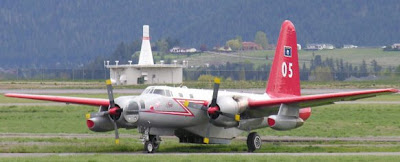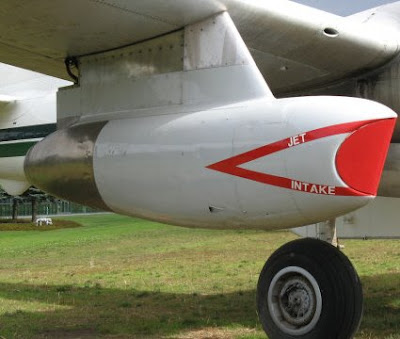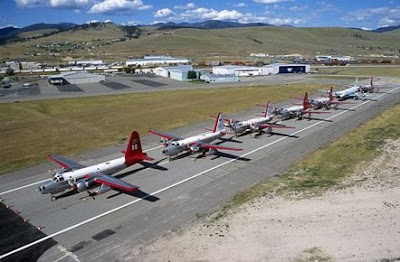The NTSB is at the site of the P2V-7 Neptune air tanker that crashed yesterday, tanker 09. They have talked to two witnesses who observed a fire in one of the jet engines shortly after take off.
From the Press Enterprise:
The Lockheed P2V-7 aircraft on the way to drop retardant on a California wildfire was between 100 feet and 300 feet off the ground when it went into a roll and crashed within seconds 1.5 miles from the Reno-Stead Airport about 6:10 p.m. on Monday, said Tom Little, lead investigator for the National Transportation Safety Board.Little said there's been nothing to indicate pilot error played any role in the crash, which brings to 27 the number of deaths in fatal crashes of firefighting air tankers in the U.S since 1991.Names of the victims were being withheld until relatives could be notified."Two witnesses confirmed the fire was from the jet engine," Little told reporters at a briefing at the airport north of Reno Tuesday night."We just are at a loss right now as to why, No. 1, the engine caught on fire and, No. 2,what caused the loss of control of the aircraft?" he said. "That is what the focus of the investigation will be over the next six to nine months."Casey Meaden, who lives near the airport, said she heard the plane and was watching it take off when she noticed the engine on the plane's left side was on fire."It didn't seem like he was getting much altitude," she told The Associated Press on Tuesday. "It was a little while after it got into the air. I could see it was off the ground. I said, `Oh, my God! That thing is on fire.'"
The P2V-7 has two piston engines and two turbojet engines. When the first P2V-1 came off the assembly lines in 1946, too late for World War II, it only had the two piston engines.
After it morphed into the P2V-5 in 1950, that model was later retrofitted with two 15.1 kN (1,540 kgp / 3,400 lbf) thrust Westinghouse J34-WE-34 turbojets, fitted outboard of the

piston engines. These turbojets were used to assist in take-offs and for additional combat speed. The turbojet engines became standard on the P2V-7 models, like the one that crashed on Monday. On an air tanker they can be used to assist during take off or after a retardant drop to climb out of a canyon if needed.

A total of 1,188 P2V Neptunes were built. Of those, 359 were the P2V-7 models which began production in 1954. The type was redesignated "P-2H" in the 1960s. The P2V-7S became the "SP-2H", and the P2V-7LP became the "LP-2J".
The P2V-7, outfitted as an air tanker, carried 2,700 gallons of retardant until the crash of the two airtankers (a C-130-A and a PB4Y) owned by Hawkins and Powers in 2002 which were caused by wing failures. Since then P2Vs have been restricted to 2,080 gallons.
 The air tanker that crashed, tanker 09, was owned and operated by Neptune Aviation Services of Missoula, Montana. The above photo is part of their fleet of P2Vs. They had a total of 10, reduced to 9 now. Some are P2V-5s and some are P2V-7s.
The air tanker that crashed, tanker 09, was owned and operated by Neptune Aviation Services of Missoula, Montana. The above photo is part of their fleet of P2Vs. They had a total of 10, reduced to 9 now. Some are P2V-5s and some are P2V-7s. Neptune has a proactive maintenance regime for their P2Vs which includes an annual x-ray of critical structural parts, searching for early signs of cracks, which is one of the issues identified as a problem with the C-130A, an aircraft no longer used as an air tanker in the United States. One of the 2002 crashes was famously caught on video tape.
Air tanker drivers are firefighters too, part of our family. We morn their loss and we again offer our condolences to the families of the crew, as well as their co-workers.




No comments:
Post a Comment